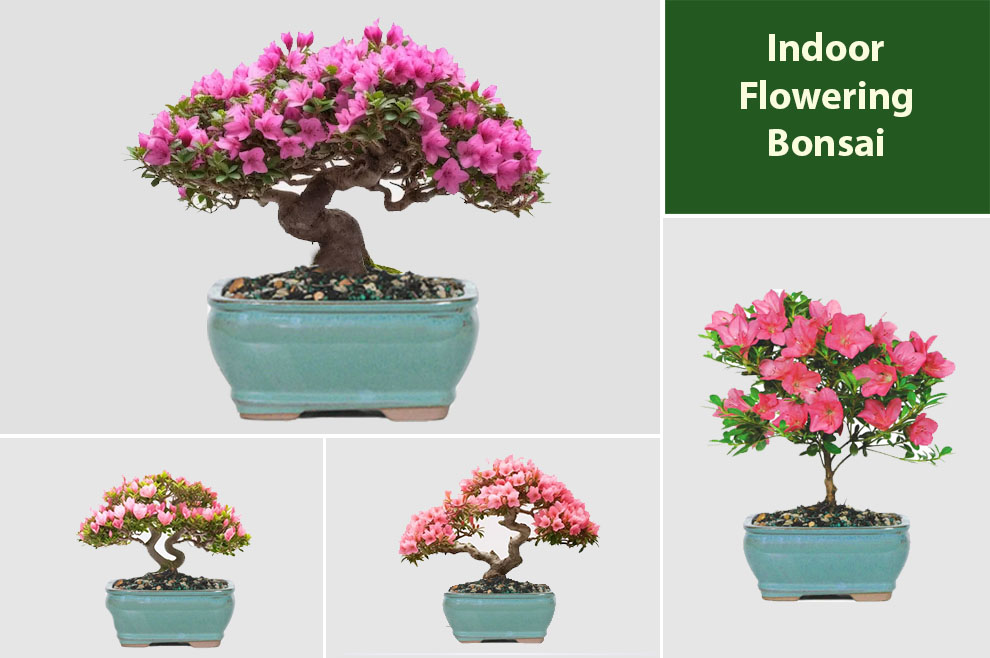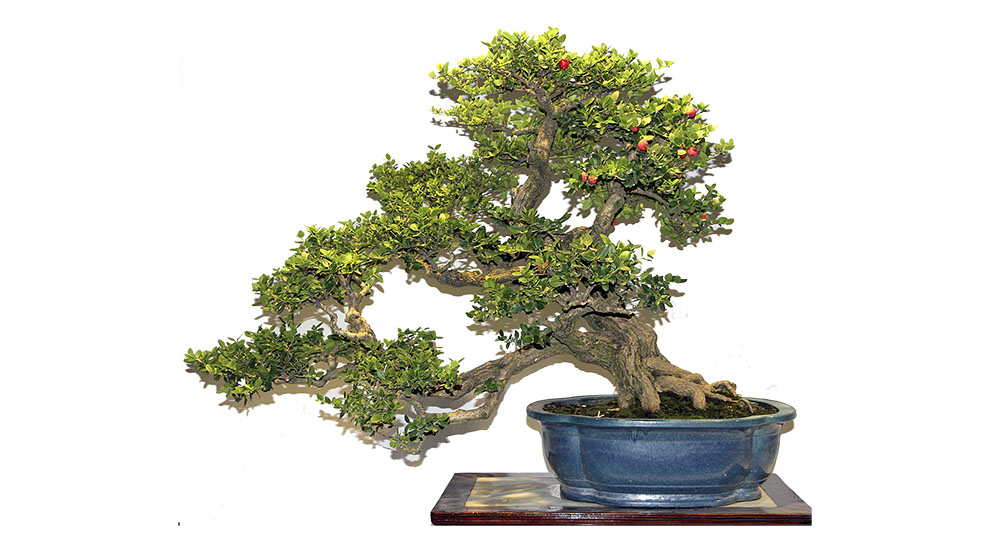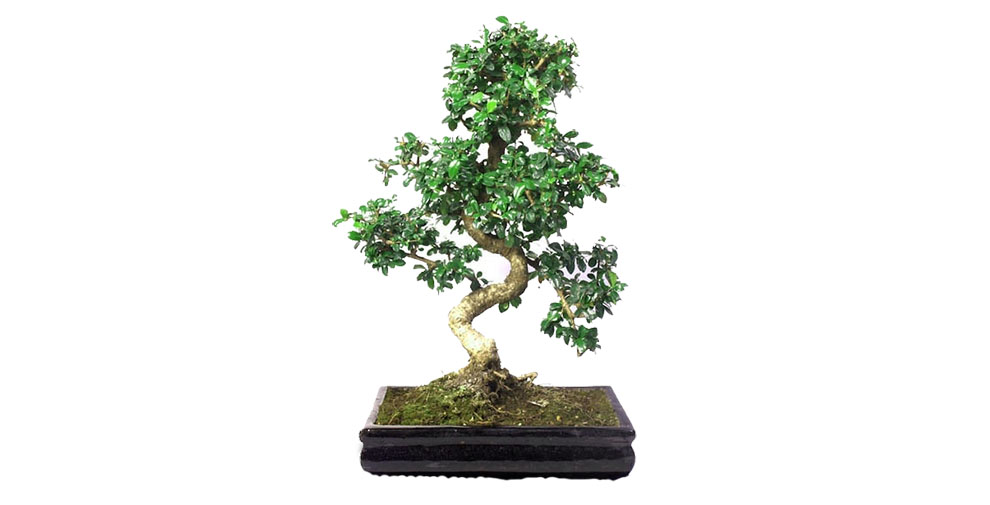Flowering Indoor Bonsai Trees With Pretty Blooms
Azalea, Jasmine, Bougainvillea, etc. are just a few of the names that come to mind when searching for indoor flowering bonsai trees. Explore other varieties mentioned below!

Imagine the delicate allure of Jasmine’s fragrant blooms, the vivid charm of Azalea’s vibrant flowers, and the subtle elegance of Serissa’s blossoms, all thriving within the intimacy of your living space.
Walk with us through the garden of “Flowering Indoor Bonsai Trees,” where the grace of nature meets the artistry of cultivation. Today, we will introduce you to the nurturing bonsai trees adorned with blossoms indoors.
From the gentle dance of light to the harmony of humidity and the artistic finesse of pruning, this exploration unravels the secrets to transforming your home into a haven of blooming serenity.
Discover the therapeutic joy of nurturing these miniature arboreal wonders and witness the fusion of art, nature, and the intimate beauty of your indoor haven.
What Are The Benefits Of Flowering Bonsai Indoors?
Flowering bonsai trees offer a myriad of benefits when cultivated indoors, enriching both the environment and the observer’s experience:
- Aesthetic enhancement: Indoor Bonsais add natural beauty and elegance to indoor spaces.
- Mindfulness and connection: Fosters mindfulness and a deeper connection with nature.
- Year-round blooms: Provides a consistent display of beauty throughout the year.
- Mood elevation: Elevates spirits, reduces stress, and promotes tranquility.
- Personal expression: Allows for creative choices in species and artistic touch.
- Interior design enhancement: Harmonizes with decor and functions as a living artwork.
- Educational value: Offers hands-on learning about plant care and horticulture.
- Therapeutic benefits: Provides a calming and relaxing activity for stress relief.
- Conducive to small spaces: Fits well in limited indoor environments.
- Conversation starters: Sparks discussions and sharing about bonsai art and cultivation.
Indoor Flowering Bonsai Varieties
- Jasmine Bonsai (Jasminum spp.)
- Fukien Tea Bonsai (Carmona retusa)
- Serissa Bonsai (Serissa foetida)
- Azalea Bonsai (Rhododendron spp.)
- Bougainvillea Bonsai (Bougainvillea spp.)
- Natal Plum Bonsai (Carissa macrocarpa)
- Chinese Elm Bonsai (Ulmus parvifolia)
- Oriental Tea Tree Bonsai (Carmona microphylla)
Several flowering bonsai trees thrive exceptionally well when cultivated indoors. Here are a few notable varieties that adapt beautifully to indoor conditions:
1. Jasmine Bonsai (Jasminum spp.)
Grace your indoor space with the aromatic charm of Jasmine. Its fragrant white flowers emit a delightful scent, making it a sensory delight. With proper care, this elegant bonsai thrives indoors, enchanting both eyes and senses.
2. Fukien Tea Bonsai (Carmona retusa)
Fukien Tea, adorned with tiny white flowers, adapts well to indoor conditions. Its glossy leaves and delicate blooms create a captivating contrast. It’s a favorite for indoor bonsai enthusiasts due to its manageable size and artistic potential.
3. Serissa Bonsai (Serissa foetida)
Serissa’s intricate beauty shines indoors with delicate white or pink blossoms against its dark foliage. Its small size and elegant flowers make it a sought-after choice, adding an artistic touch to any indoor bonsai collection.
4. Azalea Bonsai (Rhododendron spp.)
Azalea’s vibrant flowers bring a burst of color to indoor bonsai displays. Thriving with proper care, its blooms add a touch of elegance and natural beauty, making it a cherished addition to indoor gardening.
5. Bougainvillea Bonsai (Bougainvillea spp.)
Infuse your indoor space with tropical allure through Bougainvillea. Its colorful bracts create a captivating display, and it adapts well to indoor growth.
This unique bonsai brings an exotic touch to indoor gardening. The purple bougainvillea is popular among enthusiasts looking for purple flower bonsai plants.
6. Natal Plum Bonsai (Carissa macrocarpa)

Natal Plum offers both aesthetic and culinary delights indoors. Its star-shaped flowers and edible fruits thrive indoors, making it a versatile choice that adds visual and gustatory appeal.
7. Chinese Elm Bonsai (Ulmus parvifolia)
Chinese Elm, another one of the popular bonsai indoor plants with flowers known for its distinct bark and foliage, adapts well to indoor environments. While not showy, its subtle blossoms complement its elegant form, creating a serene presence indoors.
8. Oriental Tea Tree Bonsai (Carmona microphylla)

Oriental Tea Tree’s delicate white flowers and small leaves flourish indoors, offering an artistic touch to your indoor space. Its graceful appearance makes it an excellent choice for bonsai enthusiasts seeking tranquility indoors.
Apart from these, people try to grow wisteria bonsai indoors, cherry blossom bonsai indoor, and even struggle with indoor lilac bonsai.
It is so because these species are traditionally suited for outdoor cultivation due to their specific requirements for sunlight, temperature variations, and dormancy periods.
Indoor conditions might not fully support their natural growth and blooming cycles. It’s recommended to provide them with an outdoor environment whenever possible.
If you still choose to keep them indoors, ensure they receive abundant sunlight, proper temperature fluctuations, and occasional outdoor exposure to mimic their natural needs.
Keep in mind that indoor success with these species might be more challenging compared to species naturally suited for indoor cultivation.
If you are planning to keep your bonsai plants outdoor, here are some bonsai types for outdoors.
How To Take Care and Maintain Flowering Bonsai Indoors?
To care for flowering bonsai indoors, place them near bright, indirect sunlight and rotate them regularly. Maintain temperatures between 60-75°F (15-24°C), shield from drafts, and mist foliage for humidity.
Water when the topsoil is slightly dry, ensuring proper drainage. Fertilize during growth seasons with a balanced bonsai fertilizer.
Prune spent blooms and shape branches for the desired form. Watch for pests, treating them promptly if needed. Repot every 1-2 years during spring. Some species may need cooler periods to bloom.
Occasionally place outdoors for health. Adapt care based on observation for a thriving indoor bonsai display. Also, keep a check on winter bonsai care.
How to Select the Right Flowering Bonsai for Indoors?
- Research: Explore different species’ care needs, such as light, temperature, and humidity tolerance.
- Light: Match species to available light; some need bright light, while others thrive in lower light conditions.
- Temperature: Consider your indoor climate and choose species that tolerate it.
- Humidity: Determine if a species can handle indoor humidity levels or if you’ll need to provide extra moisture.
- Space: Select a size that fits available space and allows for proper care.
- Skill Level: Choose species aligned with your bonsai care experience.
- Bloom Timing: Pick species with bloom times that suit your preference.
- Climate: Opt for species that can tolerate occasional outdoor exposure, depending on the local climate.
- Aesthetic: Choose a species that resonates with your personal taste and complements your indoor decor.
- Availability: Select from species readily accessible in reputable nurseries in your region.
